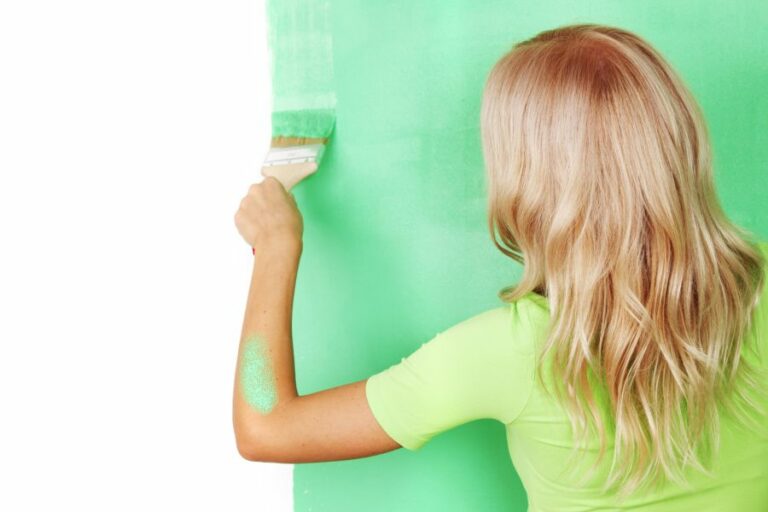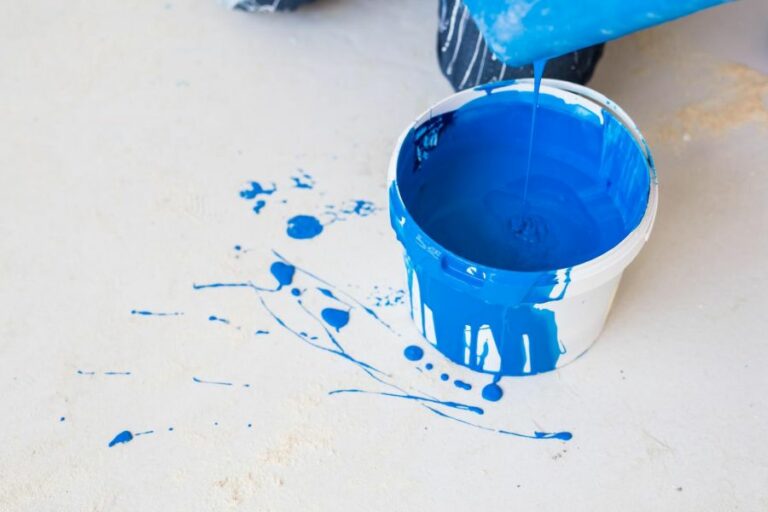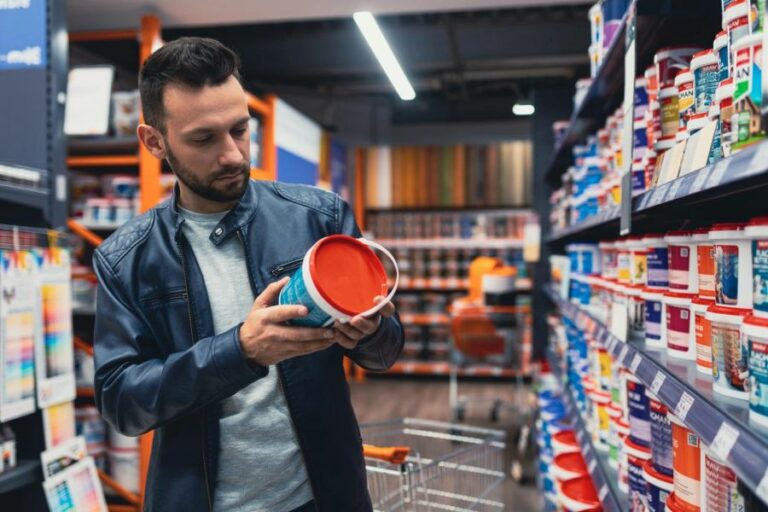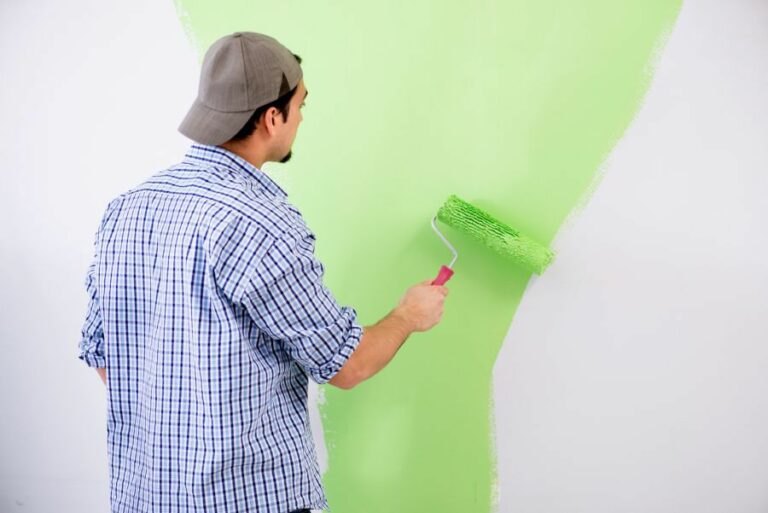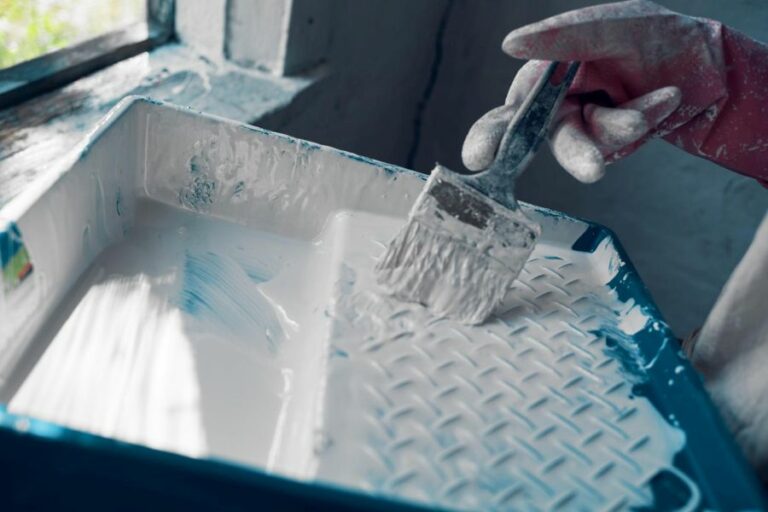Indoor Paint That Repels Water, 25 Things You Should Know
Dealing with moisture and dampness in your home? I have a remarkable solution for you. An indoor paint that repels water is perfect for keeping your walls dry, preventing ugly damp patches and mold growth. Let’s explore the benefits and best practices of this incredible paint technology.
Indoor paint that repels water:
Water-repellent interior paint is a specially formulated solution that resists water penetration, protecting surfaces from moisture damage, mold, and stains. This type of paint ensures longer-lasting protection compared to regular options and is available in various finishes. To maximize its benefits, consider paint base, finish, and primer, and follow proper preparation, application, and maintenance techniques.

Curious about indoor paint that repels water? Discover the benefits, uses, and top brands of this unique paint innovation. Keep reading and unlock the secrets to ultimate protection for your walls.
Contents
- 1 Water-Resistant Interior Paint Options
- 2 Top-Rated Water-Repellent Paints for Your Home
- 3 High-Moisture Area Paints: Interior Solutions
- 4 Non-Moisture Absorbing Paint Choices
- 5 Waterproof Paint Efficacy: Myth or Reality?
Water-Resistant Interior Paint Options
• Understanding Water-Repellent Paint
Indoor paint that repels water is an innovative solution to protecting your home from damage caused by moisture, dampness, and water leakage. Water-repellent paint is specially formulated to resist water penetration, keeping the walls and surfaces dry and clean.
This type of paint ensures that water droplets bead up, preventing the paint from staining, blistering, or peeling off, thereby prolonging the life of the painted surface.
The benefits of using water-repellent paint are numerous. It safeguards your home against mold and mildew growth, which can cause health problems and damage your property.
It also helps maintain the appearance of your walls, ceilings, and other surfaces, preventing unsightly watermarks and discoloration. Furthermore, this type of paint can save you time and money on frequent repainting as it lasts longer than regular paints.
• Choosing the Right Water-Repellent Paint
When selecting a water-repellent paint for your home, consider the following factors:
– Paint Base
Indoor paints can be either water-based (latex) or oil-based (alkyd). Water-based paints have many advantages over oil-based ones, such as faster drying time, less odor, and better resistance to yellowing. They are also more environmentally friendly and easier to clean up with soap and water.
However, if your walls have existing oil-based paint or require a more durable and stain-resistant finish, you might consider using oil-based water-repellent paint.
– Finish
The finish or sheen of the paint affects not only the appearance of the surface but also the paint’s performance. Water-repellent paints come in various finishes, such as matte, eggshell, satin, semi-gloss, and high-gloss.
High-gloss paints generally offer better water repellency, stain resistance, and durability than their matte or eggshell counterparts. However, they are also more reflective, which can emphasize surface imperfections.
Choose a finish that balances the level of water resistance you require with your desired aesthetic.
– Primer
Using a primer before applying the water-repellent paint can provide better adhesion, hide imperfections and stains, and extend the longevity of your paint job. It is especially crucial to use a primer if you are painting over a porous surface, such as new drywall or oil-based paint.
Some water-repellent paints are self-priming, eliminating the need for a separate primer layer.
• Preparing Your Home for Water-Repellent Paint Application
Before applying water-repellent paint, ensure you have adequately prepared your home’s surfaces:
- Inspect for any signs of water damage, leakage, or mold, and address these issues before painting. This may involve fixing any leaks, replacing damaged materials, or consulting a professional if mold is extensive.
- Clean your walls with a mild detergent and water solution, removing any dirt, grease, or mold. Allow the surface to dry thoroughly.
- Repair any cracks, holes, or dents in the wall with a suitable patching compound, sanding the area smoothly once dry.
- Use painter’s tape to protect baseboards, trim, and other areas you do not wish to paint.
• Applying Water-Repellent Paint Like a Pro
Follow these steps to ensure a successful water-repellent paint application:
- If using a separate primer, apply one coat according to the manufacturer’s instructions, allowing it to dry before painting.
- Stir your water-repellent paint thoroughly, then load your brush or roller with an appropriate amount of paint.
- Apply the paint using smooth, even strokes or rolls, working in small sections and maintaining a wet edge to prevent lap marks.
- Allow the first coat to dry, as per the paint’s instructions, before applying a second coat for optimal water resistance and coverage.
- When the final coat is dry, carefully remove the painter’s tape and clean your brushes, rollers, and other equipment.
• Maintaining Your Water-Repellent Paint Surfaces
Though water-repellent paint offers increased durability and resistance over regular paint, you should still regularly inspect and maintain your painted surfaces.
Routine cleaning will keep them looking fresh and prevent any build-up of dirt or grime. If necessary, touch up any areas that have been scratched or stained to maintain the paint’s water-repellent properties.
For more information on water-repellent paint, I recommend visiting the U.S. Environmental Protection Agency’s website on moisture control in homes, which offers valuable resources on preventing and addressing moisture-related issues in your home.
In conclusion, using indoor paint that repels water is an excellent choice for homeowners wanting to protect their homes from water damage, mold, and unsightly stains.
By considering factors such as paint base, finish, and primer and following proper preparation, application, and maintenance techniques, you can enjoy a durable, water-repellent paint job that will stand the test of time.
Top-Rated Water-Repellent Paints for Your Home
Maintaining the integrity and appearance of surfaces exposed to water is essential, and the right kind of paint can make all the difference in achieving this goal.
• Water-Repellent Acrylic Paints: A Popular Choice
One of the most common types of paint used for repelling water is acrylic paint. Known for its excellent adhesion, durability, and resistance to water, acrylic paint is a popular choice for both indoor and outdoor surfaces.
– Advantages of Acrylic Paints
- Water resistance: Acrylic paints form a hard, water-resistant film after drying, making them an excellent choice for repelling water on various surfaces.
- Flexibility: Acrylic paints can expand and contract with changes in temperature and humidity without cracking or peeling, making them suitable for use in different climates.
- Versatility: Acrylic paints adhere well to a wide variety of surface materials, including wood, concrete, and metal.
– Drawbacks of Acrylic Paints
- Susceptibility to UV damage: While acrylic paints are resistant to water, they can degrade under prolonged exposure to ultraviolet (UV) light, which may result in fading or chalking over time. Applying a UV-resistant topcoat can help mitigate this issue.
- Odor: The strong smell during application might be a concern for some people. However, this odor usually dissipates once the paint is dry.
For those seeking reliable and versatile water-repellent paint, I recommend checking out acrylic options. Some popular acrylic paints are Rust-Oleum’s Zinsser Perma-White or BEHR PREMIUM PLUS Exterior paint.
• Silicone-Based Paints: Innovative Water Repellents
An innovative choice for repelling water is silicone-based paint. These paints use silicone, a highly water-resistant material, to create a durable and protective barrier on surfaces.
– Advantages of Silicone-Based Paints
- Superior water resistance: Silicone-based paints provide excellent protection against water penetration, outperforming most other paints in terms of water resistance.
- Longevity: These paints are highly durable and can maintain their protective properties for an extended period, reducing the need for frequent repainting.
- Breathability: Unlike some other water-repellent paints that can trap moisture, silicone-based paints allow water vapor to escape, reducing the risk of mold and mildew development.
– Drawbacks of Silicone-Based Paints
- Cost: Silicone-based paints can be more expensive than other options due to their advanced technology and superior performance.
- Limited compatibility: These paints may not adhere well to certain surfaces or be compatible with specific primers, which means you might need to research the right combination for your project.
If you’re looking for high-performance water-repellent paint, silicone-based options like Elastomeric Waterproof Coating by Ames Research can be an excellent choice.
• Mineral Paints: Natural and Sustainable Alternatives
If you prefer using environmentally friendly materials, consider mineral paints. These water-based paints contain natural, inorganic mineral binders and offer several water-repellent properties.
– Advantages of Mineral Paints
- Eco-friendliness: Mineral paints are free of volatile organic compounds (VOCs), making them a more environmentally friendly option.
- Breathability: Like silicone-based paints, mineral paints allow for moisture vapor transmission, reducing trapped moisture and associated mold or mildew risks.
- Natural appearance: Mineral paints offer a distinctive, matte finish that complements the masonry and creates a timeless, organic look.
– Drawbacks of Mineral Paints
- Limited on certain surfaces: Mineral paints are conventionally used on masonry and may not be compatible with a few other surfaces.
- Higher price: These paints can sometimes cost more than other alternatives due to their specialized ingredients.
For those seeking water-repellent paint with a lower environmental impact, I recommend exploring mineral paint options such as ROMABIO Mineral Masonry Paint or KEIM Mineral Paints.
• Conclusion: Selecting the Best Paint for Your Needs
Ultimately, the best paint for repelling water will depend on your project’s specific requirements, such as the surface material, budget, and desired appearance.
Acrylic paints offer versatility and affordability, silicone-based paints provide superior resistance and durability, and mineral paints are an eco-friendly choice with a unique aesthetic. By considering these options and recommendations, you can confidently select the right water-repellent paint for your needs.
For more information on water-repellent paint options, consulting resources such as the U.S. Environmental Protection Agency can offer valuable insights and suggestions on environmentally friendly options.
Paint Type | Description | Benefits | Best Uses |
|---|---|---|---|
Acrylic Paint | Water-based paint made from a mixture of acrylic polymer emulsion and pigment | Quick-drying, non-toxic, and durable. Resistant to fading, cracking, and peeling | Walls, ceilings, furniture, and metal surfaces |
Oil-Based Paint | Paint made from pigment mixed with an oil such as linseed oil or alkyd resins | Long-lasting, durable, and resistant to moisture and mildew. Creates a smooth finish | Wood surfaces, metal, and high-traffic areas |
Elastomeric Paint | Waterproof paint made from acrylic latex or ethylene copolymers | Flexible, able to expand and contract with temperature changes. Resistant to water and moisture. | Exterior walls, roofs, and other surfaces exposed to moisture or harsh weather conditions |
Chalk Paint | Water-based, decorative paint that creates a chalky or matte finish | Easy to apply and can adhere to almost any surface without priming or sanding | Furniture, decorative items, and interior walls. |
Silicone-Based Paint | Paint containing silicone, which repels water and prevents moisture intrusion | Water-repellent, highly resistant to weather and environmental conditions | Exterior walls, facades, and surfaces prone to water damage |
High-Moisture Area Paints: Interior Solutions
Selecting the right interior paint for high-moisture areas is essential to ensure long-lasting protection for your walls and surfaces. High moisture areas in your home, such as bathrooms, kitchens, and basements, require a different type of paint than other parts of the house.
• The Importance of Water-Resistant Paint
High moisture areas in your home can lead to a plethora of problems, including mold, mildew, and deteriorating paint. Choosing water-resistant paint for these areas is essential, as it prevents moisture from penetrating the paint surface, subsequently protecting your walls and surfaces.
Furthermore, high-quality water-resistant paints have antimicrobial additives that help prevent mold and mildew growth. Thus, using water-resistant paint for high moisture areas not only ensures durability but can also contribute to a healthier living environment.
– Types of Water-Resistant Interior Paint
There are two primary types of water-resistant interior paint: semi-gloss and high-gloss finish. Both these options are suitable for high moisture areas, but they differ slightly in appearance and durability.
Semi-Gloss Finish
Semi-gloss paint has a slight sheen that makes it an excellent choice for rooms that require easy cleaning and moisture resistance. This type of paint finish is perfect for kitchens, bathrooms, and laundry rooms. Semi-gloss paint is durable, resistant to stains, and relatively simple to clean.
However, it’s essential to remember that the shine in semi-gloss paints can accentuate uneven surfaces or imperfections, so it’s crucial to prepare the walls meticulously before painting.
High-Gloss Finish
High-gloss paint has a vibrant, shiny appearance that is even more durable and resistant to moisture than semi-gloss paint, making it an excellent choice for high-moisture areas.
This paint finish is perfect for surfaces that require frequent cleaning and constant exposure to moisture, such as kitchen cabinets, trim, doors, and window sills.
While high-gloss paint provides more protection than semi-gloss paint, its shiny finish is not recommended for larger wall areas, as it can emphasize imperfections even more than semi-gloss paint.
• Considerations When Choosing Paint for High Moisture Areas
Besides the type of paint finish, there are several other factors to consider when selecting the best interior paint for high-moisture areas in your home.
– Priming
When painting high-moisture areas, using a high-quality primer is essential. The primer not only provides an even base for the paint but also decreases the chance of mold and mildew growth by adding an extra layer of protection.
Opt for a primer that’s specifically designed for high moisture areas to ensure maximum performance.
– Ventilation
Proper ventilation is crucial in high-moisture areas to prevent mold and mildew growth. Make sure to install exhaust fans or vents in these areas, as improved airflow will contribute to the durability of the paint and help maintain a healthier environment.
– Paint Ingredients
Selecting paint with antimicrobial additives can help prevent mold and mildew growth in high-moisture areas. These additives inhibit the growth of microorganisms on the paint surface, providing an extra layer of protection. Look for paints that are specifically labeled as mold and mildew-resistant.
– Quality
Investing in high-quality paint will provide better coverage and durability, leading to long-lasting protection for your high-moisture areas. While high-quality paint might be more expensive initially, it will likely save money in the long run due to its superior performance and limited need for repainting.
• Recommended Brands for High Moisture Areas
Several reputable paint brands offer excellent options for high-moisture areas. Some of these brands include:
- Benjamin Moore: The company’s Aura Bath & Spa line link to Benjamin Moore’s Aura Bath & Spa Line is specifically designed for high-humidity rooms and provides excellent durability and mildew resistance.
- Sherwin-Williams: Sherwin-Williams’ Duration Home line link to Sherwin-Williams’ Duration Home Line is another excellent option for high moisture areas, as it offers exceptional moisture resistance and durability.
In conclusion, choosing the right interior paint for high-moisture areas in your home is crucial to ensure long-lasting protection and resistance against mold, mildew, and other moisture-related issues. Consider factors like paint finish, primer, ventilation, and paint ingredients when making your decision.
Investing in high-quality paint specifically designed for high-moisture areas is the best way to safeguard your walls and surfaces while maintaining a fresh and attractive home interior.
Non-Moisture Absorbing Paint Choices
Paint plays a crucial role in protecting walls and other surfaces from moisture, which can cause a myriad of problems. Selecting the right type of paint is essential to ensure that it effectively prevents moisture from penetrating and causing damage.
• Water-Resistant Paints
Water-resistant paints, as their name suggests, keep moisture at bay. These paints are specifically formulated to create an effective barrier against water intrusion.
They are ideal for bathrooms, kitchens, and other damp-prone areas in both residential and commercial properties. One such type of water-resistant paint is masonry paint.
– Masonry Paint
This type of paint is primarily designed for brick, concrete, and other masonry surfaces. It contains special additives that increase adhesion and overall water resistance. The paint is durable and provides a breathable yet moisture-resistant barrier on the surface.
You can find masonry paint in both water-based and oil-based formulations, but I recommend using water-based paint as it is easier to clean, dries quickly, and is environmentally friendly.
For more information on masonry paint, visit the U.S. Department of Energy’s Building Technologies Office page on masonry paint.
• Moisture-Resistant Primers
Before applying your topcoat of paint, it’s essential to use a moisture-resistant primer to create a solid base. This acts as a barrier, preventing moisture from entering the substrate.
– Oil-Based Primer
Oil-based primers excel at preventing moisture from penetrating the surface. They create a durable and impermeable film that is resistant to water, thus providing excellent protection against moisture.
Because of their tenacious adhesion capabilities, these primers work well on a variety of surfaces, including wood, metal, and masonry. However, oil-based primers can emit strong fumes and may take longer to dry than water-based primers.
– Shellac Primer
Shellac primers are excellent for sealing porous surfaces or areas with heavy stains and do not hold moisture. These primers also form an impermeable barrier that prevents water penetration. They are easy to apply and dry quickly, but they do emit a strong odor during application.
These primers are typically used in restoration projects or areas where water damage occurs.
• Exterior Paint Options
Protecting your home’s exterior from moisture is essential for maintaining its structural integrity and preventing mold and mildew growth. Here are some exterior paint options that are good at resisting moisture:
– Acrylic Paint
Acrylic paint is a popular choice for exterior applications due to its excellent adhesion and durability. It provides a flexible, breathable barrier that resists moisture and can withstand a variety of weather conditions.
The paint expands and contracts with the substrate, preventing cracks and making it difficult for moisture to seep through. Acrylic paint also resists fading and chalking, which ensures that your exterior surfaces maintain their fresh appearance for longer.
– Elastomeric Paint
Elastomeric paint is a high-performance coating with exceptional water resistance and durability. It creates a rubber-like, waterproof membrane on the surface, which expands and contracts along with the substrate.
This flexibility prevents moisture intrusion and keeps the surface protected. Elastomeric paint is ideal for stucco, masonry, and other porous surfaces that are prone to moisture infiltration.
• Conclusion
In conclusion, the ideal paint that doesn’t hold moisture depends on your project’s specific requirements and conditions.
Water-resistant paints, such as masonry paint, and moisture-resistant primers, like oil-based or shellac primers, can effectively prevent moisture penetration. For exterior applications, acrylic and elastomeric paints offer excellent protection against moisture.
Ultimately, choosing the appropriate paint and primer for your specific needs is essential to ensure proper surface preparation and application techniques. Doing so can achieve a durable, moisture-resistant finish that will protect your surfaces from potential damage.
Waterproof Paint Efficacy: Myth or Reality?
As the name suggests, waterproof paint is designed to provide a barrier against water penetration. Given the risks associated with water damage, these paint formulations are increasingly popular in residential, commercial, and industrial applications.
However, there are still some myths and misconceptions surrounding the effectiveness of waterproof paint, which I aim to address.
• Understanding Waterproof Paint
Different types of waterproof paints are available, each formulated for specific applications and environmental conditions. Some common waterproof paints include elastomeric, cementitious, and acrylic-based solutions.
The ingredients and properties of these coatings depend on the manufacturer, but all waterproof coatings need to provide a durable, long-lasting barrier against water ingress.
– Elastomeric Paints
Elastomeric paints are made with elastic polymers, allowing them to expand and contract along with the substrate, thus helping prevent water penetration.
These coatings are ideal for surfaces that experience significant movement or weather fluctuations, such as exterior walls, concrete blocks, and masonry surfaces. Their flexibility makes elastomeric paints a popular choice for waterproofing applications.
– Cementitious Paints
Cementitious paints are made from a mix of cement, sand, and other additives, providing a hard-wearing and waterproof barrier for concrete and masonry surfaces. This type of waterproofing solution is best suited for areas with high water exposure, such as basements, bathrooms, and balconies.
Cementitious paints are known for their excellent adhesion and resistance to chemicals, making them a reliable choice for waterproofing.
– Acrylic-Based Paints
Acrylic-based waterproof paints use polymers to create a flexible and water-resistant coating. These paints are suitable for a wide variety of surfaces, including wood, metal, and masonry. Acrylic waterproof coatings are known for their ease of application, low odor, and quick-drying properties.
• Factors Affecting the Effectiveness of Waterproof Paint
Waterproof paint’s performance depends on various factors, including the quality of the product, proper surface preparation, and correct application. In order to achieve the best results with your waterproof paint, consider the following recommendations.
– Quality of the Product
Not all waterproof paints are created equal. It is essential to choose a reputable brand known for producing high-quality coatings. Verifying the product’s performance claims through independent testing labs, customer reviews, and project references is advisable.
You can also consult with industry professionals to get an accurate understanding of which waterproof paints have a track record of success. The U.S. Environmental Protection Agency provides resources on selecting environmentally friendly and effective waterproof coatings.
– Surface Preparation
Proper surface preparation plays a crucial role in achieving a long-lasting and effective waterproof coating. Before applying the paint, the surface should be clean, free of debris and sound. Reproducing cracks or damages that could undermine the paint’s performance is also essential.
Depending on the substrate material and the waterproof paint you’re using, the surface may require specific treatments, such as etching or primer.
– Application Technique
Following the manufacturer’s instructions for the application of waterproof paint is vital for achieving the best results. Factors like the paint’s thickness, the application pattern, and curing time need to be adhered to for optimal performance.
Waterproof paints may also require multiple coats to ensure full coverage and an effective barrier against water ingress. It’s crucial to follow the recommended drying times between coats, as rushing the process can compromise the performance of the waterproof coating.
• Potential Limitations of Waterproof Paint
While waterproof paint can effectively protect surfaces from water damage, it is not a one-size-fits-all solution. In some cases, waterproof paint may not be sufficient or appropriate to address water-related problems.
For example, areas with high hydrostatic pressure, such as below-ground basements, may require additional waterproofing measures. In cases of extreme water intrusion or damage, professional contractors may need to implement more advanced waterproofing solutions.
• Final Thoughts
In summary, waterproof paint can effectively protect surfaces against water ingress, provided that the right product is chosen and applied correctly.
By addressing the factors that influence the effectiveness of these coatings, it is possible to achieve long-lasting protection for your property.
However, it’s essential to consider each situation’s specific requirements and limitations to ensure that waterproof paint offers the right solution for your needs.


